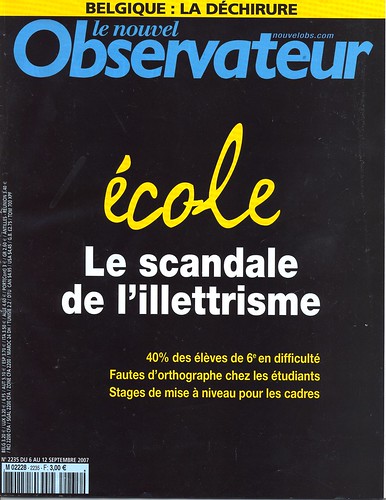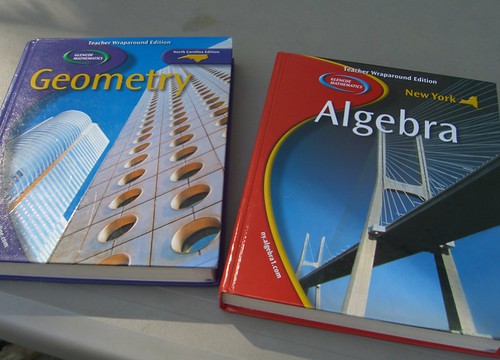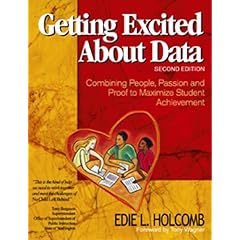(a version of this post appears at Special Education Law Blog)
Back in 1986, Congress passed the Handicapped Children's Protection Act, which (a) recognized that parents of handicapped children might disagree with schools over effective education of handicapped children, (b) recognized that parents, compared with school districts, had smaller resources, and (c) leveled the parent/ school district playing field, by allowing parents to recover their expert witness.
But then in 2006, the Supreme Court ruled that parents cannot recover expert witness costs, in the ruling costs, in Arlington Central School District v. Murphy (2006).
The Murphy ruling was a real blow to most parents of disabled children. Why? Approximately 36% of children with disabilities live in families earning less than $25,000 a year; over 2/3 earn less than $50,000 a year. Those families can't afford the expert witness costs.
There is an act before Congress that needs your Congressional Representative's support.
The IDEA Fairness Restoration Act (H.R. 4188) would override the Supreme Court's decision in
Arlington v. Murphy (2006) and allow parents who prevail in due process or litigation to be reimbursed for their expert witness fees. H.R. 4188 is important to level the playing field and protect the rights of
the 7 million children with disabilities.
On Tuesday, May 6, 2008, please call your Congressional Representatives (202-224-3121) and ask them to cosponsor H.R. 4188, the IDEA Fairness Restoration Act. Have friends and family members call. It will only take 2-3 minutes!
If you do not know who your Congressional Representative is, go to http://www.house.gov and put your zip code into the box in the upper left corner. (You usually only need your five digit zip code.) You can also use http://www.congress.org to look up Representatives and phone numbers.
It helps if you ask for the Education Aide, but you can also talk to the person who answers the phone. You can also leave a voicemail message. Tell them you are a constituent and would like the Congressperson to co-sponsor H.R. 4188, the IDEA Fairness Restoration Act. Congress needs to hear from as many parents, advocates, attorneys, and others as possible.
Allowing parents to recoup their expert fees simply restores Congress' original intent, as expressed in the Handicapped Children's Protection Act of 1986.
Why Is This Act Necessary?
School districts use tax dollars to employ and pay for psychologists and other paid experts at IEP meetings and hearings.
For parents, hiring qualified medical, technical, and other expert witnesses can cost many thousands of dollars. Few parents can afford this high cost, putting due process out of reach for most parents, who struggle to afford what their children with disabilities need.
When prevailing parents cannot recover expert costs, the playing field is neither level nor fair, and children are denied a free appropriate public education and other fundamental IDEA rights.
Introduced by Congressman Chris Van Hollen (D-Maryland) and Pete Sessions (R-Texas), H.R. 4188 will restore Congress’ original intent and allow parents to recover their expert fees.
Why Is It Important For Your Congressional Representative to Co-Sponsor the Bill?
This is bi-partisan legislation, and the more co-sponsors, the more likely the passage of the act.
Why You Need to Call Your Congressional Representative:In some ways, children with disabilities are invisible Americans (see, for example, Michael Bérubé's analysis of the Presidential candidates' positions on disability,
Disability and Democracy)
Calling your Congressional Representative serves to put Congress as a whole on notice that educating all students with disabilities--as required by law--is a deep concern for the American public.
If due process is not affordable, the IEP process becomes even more one-sided and unfair. School personnel control the IEP process and often vastly outnumber parents. When the right to due process is meaningful, it helps ensure that school districts provide appropriate educations to children with disabilities.
Most parents turn to due process and litigation only as a last resort. In 2003, the GAO reported that there were only 5 hearings per 10,000 special education students. But when parents are forced into due process, they should be able to afford expert witnesses.
Over 100 disability organizations, including the Consortium of Citizens with Disabilities, Arc, Easter Seals, the Council of Parent Attorneys & Advocates, Inc., National Disability Rights Network, National Down Syndrome Society, National Down Syndrome Congress, Learning Disabilities Association, National Center for Learning Disabilities, CHADD, and others support H.R. 4188.
Read the text of the letter sent by disability organizations at The Council of Parent Attorneys and Advocates, Inc. (COPAA)'s website: http://www.copaa.org/news/organizations.html
Want more detailed information?
Download COPAA’s complete brochure on the IDEA Fairness Restoration Act and enabling parents to recover expert fees, http://www.copaa.org/pdf/MurphyBrochure.pdf
There is also a Spanish language version, http://www.copaa.org/pdf/MSSpanish.pdf
(Lea aqui en Espanol: Murphy y los derechos de los padres para recuperar el costo de los expertos: http://www.copaa.org/pdf/MSSpanish.pdf )
You can read H.R. 4188 here: http://www.copaa.org/news/IRFAct.html
For more information about H.R. 4188 and this alert, please contact Bob Berlow and Jess Butler of COPAA at
protectidea@copaa.org Together, we can make the difference and restore a balanced playing field for children with disabilities.
About COPAA:The Council of Parent Attorneys and Advocates, Inc. (COPAA) is an independent, nonprofit, §501(c)(3) tax-exempt organization of attorneys, special education advocates and parents. COPAA's mission is to be a national voice for special education rights and to promote excellence in advocacy. Our primary goal is to secure high quality educational services for children with disabilities.








